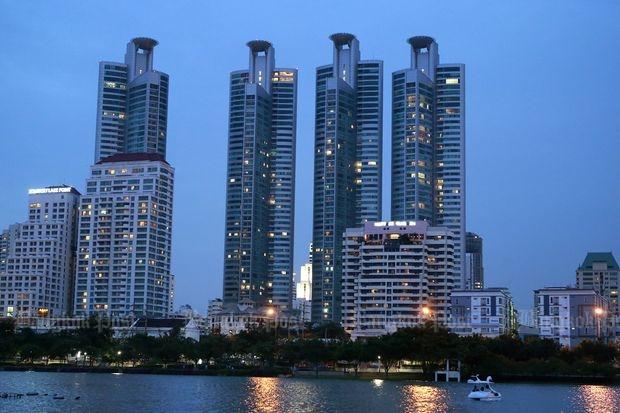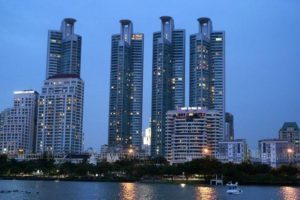The desire of people to work, live and shop in certain locations, combined with the scarcity of developable land in some of these areas, has led to high-rise or “skyscraper” buildings.
What determines the optimum height of buildings and what additional factors determine height?
Developers are typically motivated by profit and want to construct a building that produces the best returns compared to their total costs of land plus construction. This is the main factor that determines what is built in combination with planning restrictions.
The relationship between the costs of land as a proportion of total cost is a significant factor in determining the amount of space built on a specific plot of land.
For almost the first time, the land cost per square metre of sellable built area now exceeds the construction cost per square metre in downtown Bangkok. This means that a developer needs to build the maximum amount of space allowed on the plot in order to spread the land price across the sellable area.
In suburban areas, where land prices are much lower, it often does not make sense to build high-rise buildings because the increased construction costs do not produce higher returns than low-rise development where the cost of land is a small proportion of the total development cost.
When you fly into Bangkok, you see a definite concentration of high-rise buildings and their height has been determined as much by economic factors as by government planning regulations.
In most cases, it does not make sense to build high-rise buildings on cheap land.
Does height produce better revenue?
The answer is mixed, for offices, there is limited evidence the height produces a higher rent. Rents in office buildings for a specific size of space tend to be the same irrespective of the office floor.
Residential prices are very different and developers sell off-plan with price increases for every floor, often adjusting the configurations of upper floor units to further enhance sales prices.
When we look at the resale market in completed buildings, the picture is a little different. Height does matter, but there is not a linear increase in resale prices based on height.
In many cases, view is more important. A condominium with a clear view of Lumpini Park, where the view will not be blocked in the future, is worth more than another condominium in the same building that does not have a park view.
Construction costs increase based on the height of a building, but not on a straight line basis.
John Pollard, CEO Southeast Asia at Meinhardt, a leading engineering consultancy, notes: “For any multi-storey buildings over five storeys, the cost per square metre is fairly consistent until you go above 40 storeys, after which the efficiency drops so the per-metre cost goes up. After 50 storeys, construction costs start to increase significantly and then after 70 storeys there is another jump due to the higher level of technology required, both in structural demands of loading as well as lifting and Mechanical, Engineering and Plumbing (MEP) requirements.”
Another factor to take into consideration is the efficiency of a building — the ratio of lettable space to the total built area.
Developers make money on the sellable area and the incentive is to maximise the ratio of the sellable area compared to built area.
Shorter buildings are more efficient than high buildings because the latter require more room for lifts and need a stronger structure due to the load of the building and stronger wind loads.
More of the built area in a high-rise building is required to accommodate these elements reducing the lettable/sellable area.
After a certain height, there are diminishing marginal returns where the extra cost of construction and reduction in the ratio of sellable area compared to built area means that going higher does not make financial sense.
Height does matter, especially for residential buildings, but developers need to find the height that produces the best return, navigating the challenges of creating something both iconic and innovative against developing a financially viable, long-term asset.
Chris Hobden is Senior Manager, Research and Consulting, CBRE Thailand. He can be reached at bangkok@cbre.co.th Facebook: CBRE.Thailand Twitter: @CBREThailand LinkedIn: CBRE Thailand and website: www.cbre.co.th
Source: http://www.bangkokpost.com/business/news/1159201/how-high-should-you-build-



